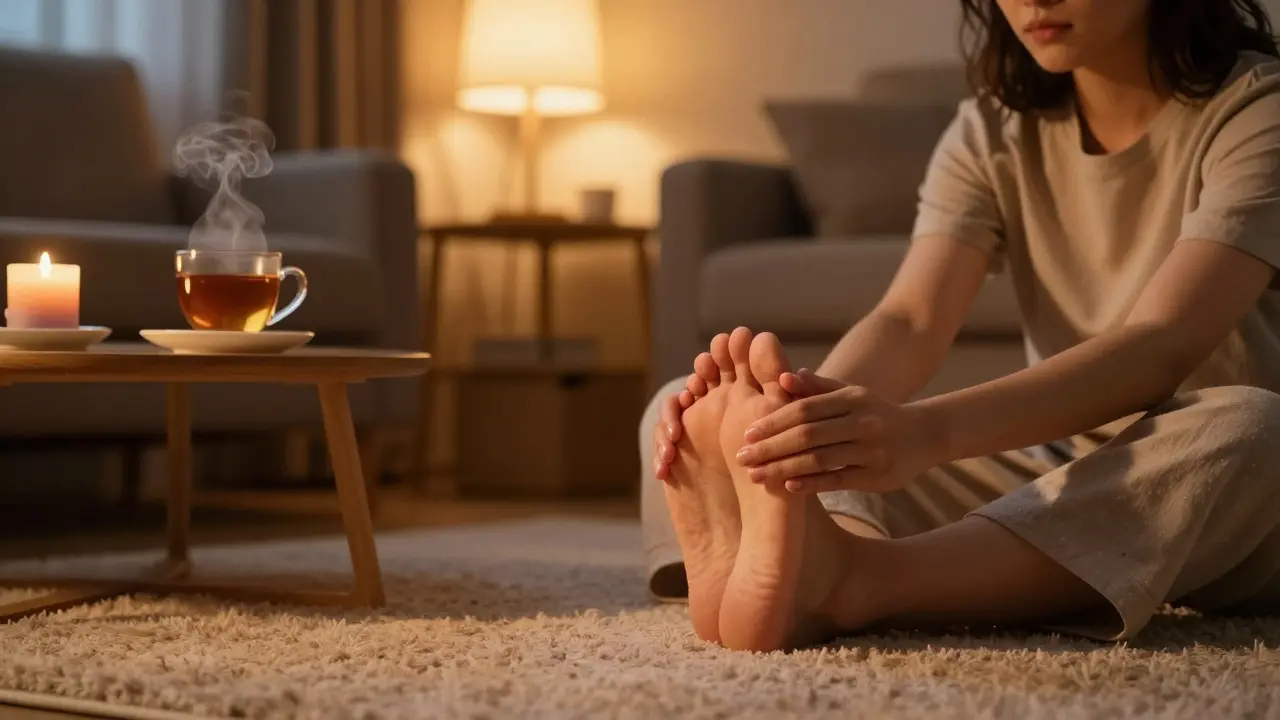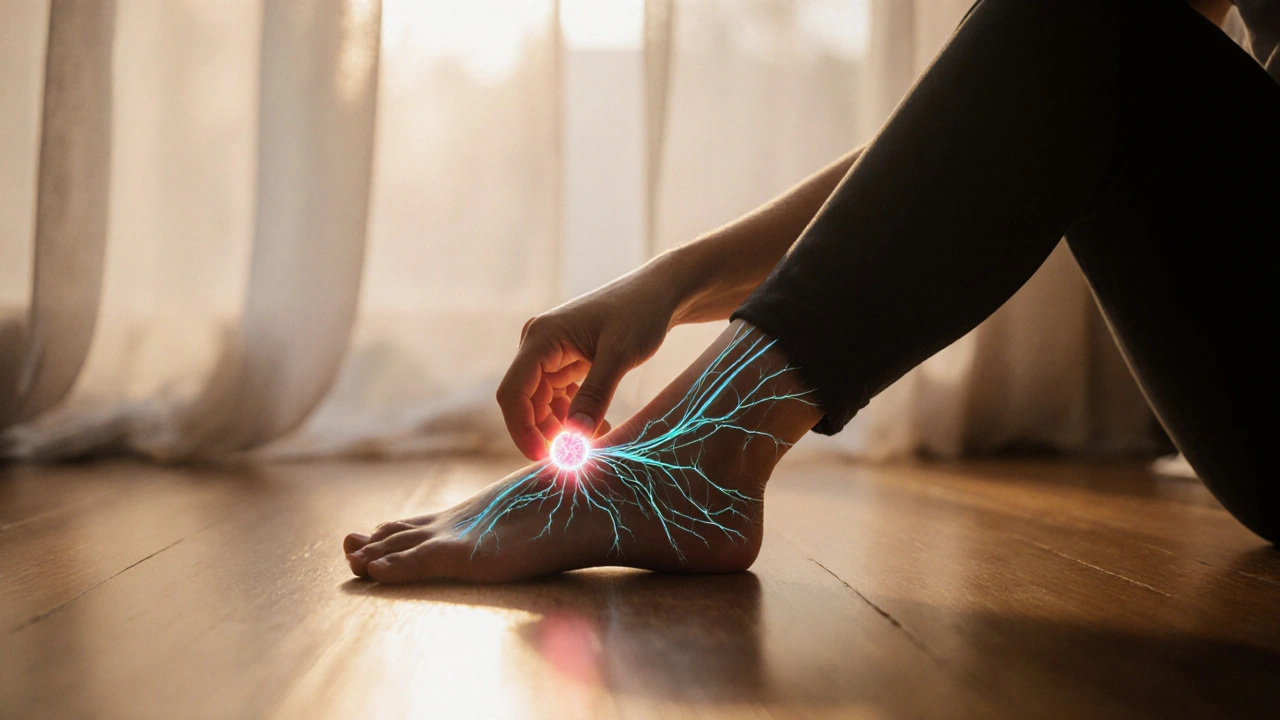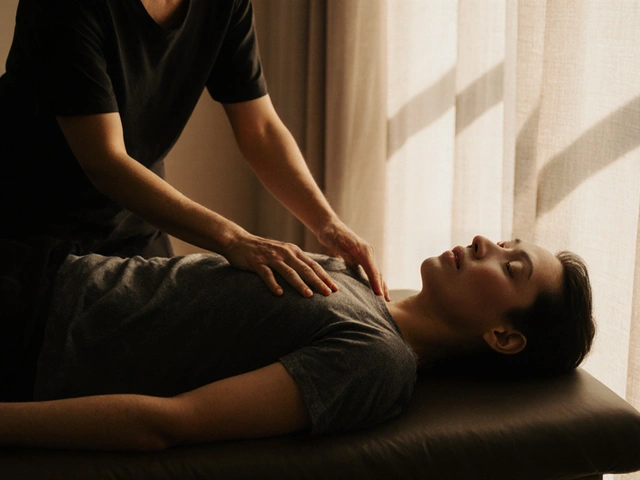Reflexology: Foot & Hand Techniques for Fast Relief
Reflexology maps pressure points on your feet and hands to other parts of the body. It’s not magic — it’s simple touch that can ease tension, help sleep, and lower stress fast. If you want practical tools you can use tonight, keep reading.
Quick 5‑Minute Foot Routine
Start with a warm foot soak for 3–5 minutes to relax muscles. Dry your feet and sit comfortably. Use your thumb to do a slow "thumb‑walk" along the sole: press, push, and release as you move. Spend 30–60 seconds on the inner arch (spine and organs), 20–30 seconds on the ball of the foot (chest and lungs), and 20–30 seconds on the base of the toes (head and sinuses).
Apply medium pressure — firm but not painful. If you hit a tender spot, hold steady for 5–10 seconds, breathe, and let the ache ease. Finish with gentle squeezes around the ankle and a few long strokes up the top of the foot to relieve tension.
What Reflexology Helps With—and When to Be Careful
People use reflexology for stress, mild headaches, sleep problems, and general relaxation. It can be a great add‑on to physical therapy or massage. But avoid reflexology if you have deep vein thrombosis, open wounds or severe foot infections, recent fractures, or advanced neuropathy without medical OK. Pregnant people should check with their doctor first.
If you have diabetes, circulation issues, or swelling in the feet, ask your clinician before trying pressure techniques. Reflexology is gentle care, not a cure for serious conditions — use it alongside medical advice when needed.
Sessions usually last 30–60 minutes. A trained reflexologist will assess your feet, work through mapped zones, and give home tips. Expect hands‑on pressure, not deep tissue work. If you feel lightheaded or uncomfortable, tell the therapist right away.
Want more targeted relief? Combine reflexology with acupressure or trigger‑point work for tight calves and lower back. Simple breathing and stretching after a session helps the body settle and hold gains in relaxation.
How often should you do this at home? Try a short daily routine for a week, then reduce to 2–3 times weekly. Track sleep, stress, and pain levels — small changes often show up in a few sessions.
Looking for a pro? Choose someone with formal reflexology training, clear hygiene practices, and good client reviews. Ask about session structure and whether they adapt pressure for conditions like neuropathy or pregnancy.
Reflexology is easy to learn, quick to try, and can become a useful self‑care habit. Start with the five‑minute foot routine tonight and see how your body responds. For more techniques and therapy ideas, explore related guides on acupressure, trigger point work, and therapeutic massage at AIST Massage Triumphs.

How to Incorporate Reflexology into Your Self-Care Routine
Learn how to use reflexology-simple foot pressure techniques-to reduce stress, improve sleep, and reset your nervous system as part of your daily self-care routine. No tools needed.

Discovering the Magic of Reflexology: How Foot Pressure Can Transform Your Well-Being
Discover how reflexology uses targeted pressure on the feet to reduce stress, ease pain, and improve sleep - backed by science and real-world results. Learn where to press, what to expect, and how to start today.
Categories
- Health and Wellness (148)
- Alternative Therapies (86)
- Massage Therapy (40)
- Travel and Culture (15)
- Beauty and Skincare (9)
- Holistic Health (8)
- Health and Fitness (5)
- Spirituality (5)
- Other (2)
- Personal Development (2)
Popular Articles

The Healing Power of Touch: A Deep Dive
Sep, 11 2023


